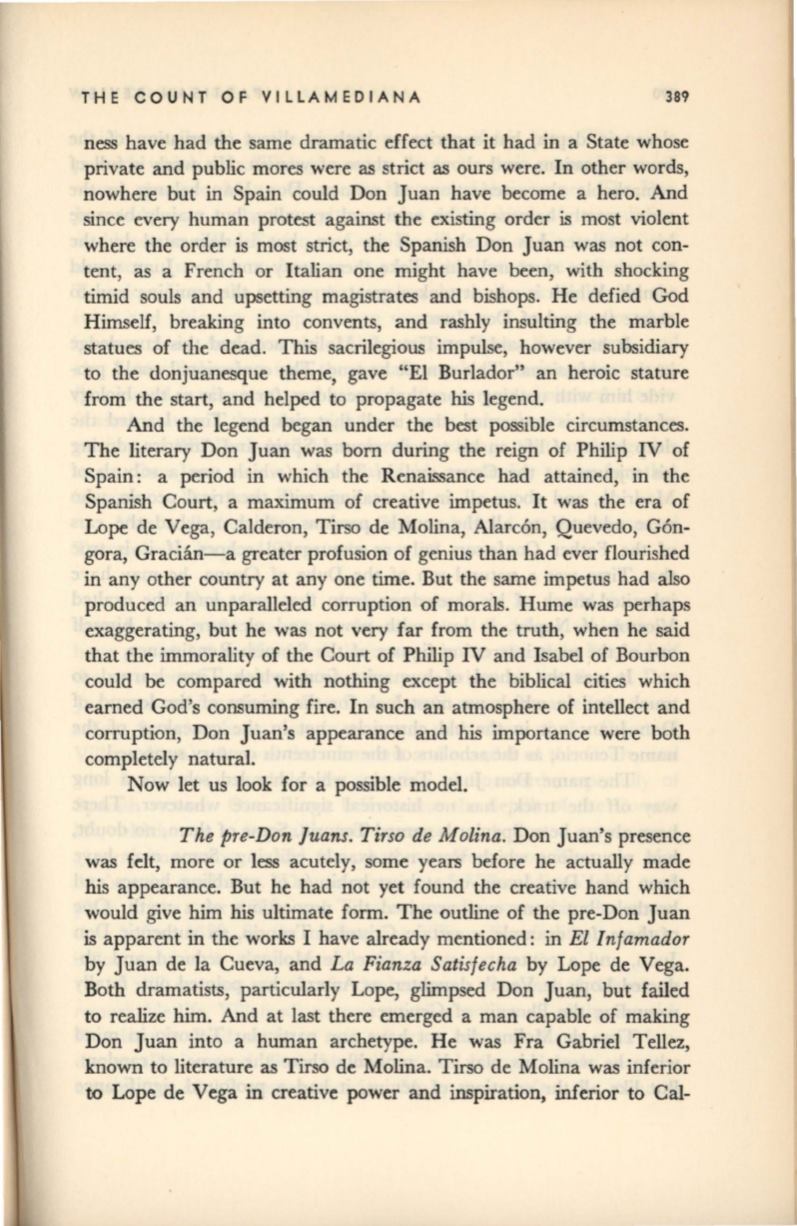
THE COUNT OF VILLAMEDIANA
389
ness have had the same dramatic effect that it had in a State whose
private and public mores were as strict as ours were. In other words,
nowhere but in Spain could Don Juan have become a hero. And
since every human protest against the existing order is most violent
where the order is most strict, the Spanish Don Juan was not con–
tent, as a French or Italian one might have been, with shocking
timid souls and upsetting magistrates and bishops. He defied God
Himself, breaking into convents, and rashly insulting the marble
statues of the dead. This sacrilegious impulse, however subsidiary
to the donjuanesque theme, gave "El Burlador" an heroic stature
from the start, and helped to propagate his legend.
And the legend began under the best possible circumstances.
The literary Don Juan was born during the reign of Philip IV of
Spain: a period in which the Renaissance had attained, in the
Spanish Court, a maximum of creative impetus. It was the era of
Lope de Vega, Calderon, Tirso de Molina, Alarcon, Quevedo, Gon–
gora, Gracian- a greater profusion of genius than had ever flourished
in any other country at anyone time. But the same impetus had also
produced an unparalleled corruption of morals. Hume was perhaps
exaggerating, but he was not very far from the truth, when he said
that the immorality of the Court of Philip IV and Isabel of Bourbon
could be compared with nothing except the biblical cities which
earned God's consuming fire. In such an atmosphere of intellect and
corruption, Don Juan's appearance and his importance were both
completely natural.
Now let us look for a possible model.
The pre-Don Juans. Tirso de Molina.
Don Juan's presence
was felt, more or less acutely, some years before he actually made
his appearance. But he had not yet found the creative hand which
would give him his ultimate form. The outline of the pre-Don Juan
is apparent in the works I have already mentioned: in
El Infamador
by Juan de la Cueva, and
La Fianza Satisfecha
by Lope de Vega.
Both dramatists, particularly Lope, glimpsed Don Juan, but failed
to realize him. And at last there emerged a man capable of making
Don Juan into a human archetype. He was Fra Gabriel Tellez,
known to literature as Tirso de Molina. Tirso de Molina was inferior
to
Lope de Vega in creative power and inspiration, inferior to Cal-


